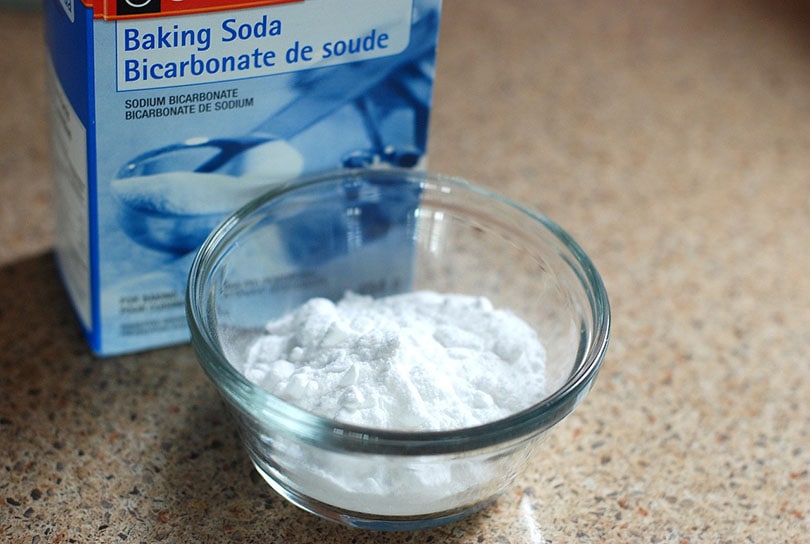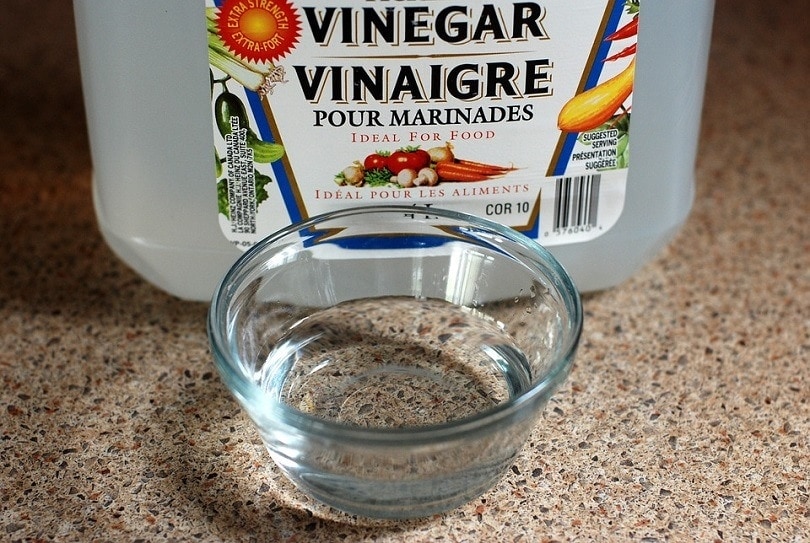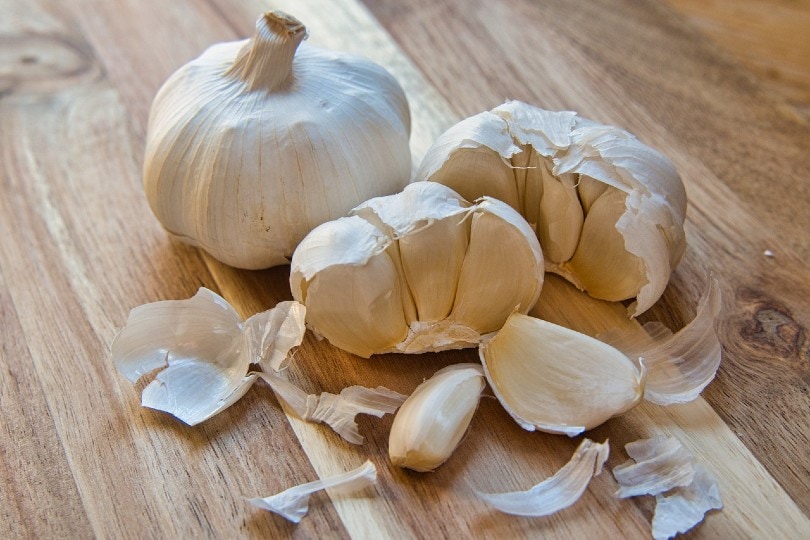How to Get Rid of White Mold on Plants: 8 Tips & Tricks
-
Pete Ortiz
- Last updated:

White mold is one of the most common infections a plant can develop. While you cannot control the humidity or moisture in a specific environment, there are some tips you could try to prevent the growth of white mold or eliminate it. The best part is that you can use various natural remedies to fight white mold, and we will lay out all of them below.
Make sure to follow the instructions precisely to avoid damaging your plants.
The 8 Tips & Tricks to Get Rid of White Mold on Plants
1. Baking Soda

Using baking soda on your white mold-infested plants can help create an alkaline environment. The pH levels of baking soda are very high, making it an excellent solution for white mold and other fungi that grows on plants. Baking soda is a remedy that can safely remove white mold from plants, but it may not be the best solution for more severe cases. It is best to use baking soda as a preventive measure and to treat more mild cases of white mold.
Instructions: Begin by mixing one tablespoon of baking soda with half a tablespoon of liquid soap. Dilute this mixture with one gallon of water and pour it into a spray bottle. Spray this homemade solution on all affected leaves. Make sure not to apply baking soda to the leaves while they are exposed to the sunlight, as it may burn the leaves.
2. Neem Oil
Neem oil is a potent, natural substance that effectively removes mold, mildew, and unwanted pests. Neem oil is excellent for plants because it won’t harm them even if you reapply the oil frequently for better results. Using neem oil will stop your plant from developing spores in less than 24 hours.
Instructions: Add three tablespoons of neem oil to a gallon of water. Once you pour the solution into a spray bottle, spray the affected area once a week or every 2 weeks. Avoid spraying buds and flowers on the plant.
3. Milk
When faced with fungal infections of their plants, many gardeners turn to milk and whey instead of chemical fungicides. Some studies have shown that treating affected plants with milk is much more effective at killing mold and mildew than chemical treatment.
Instructions: Create a solution of 40% milk and 60% water, and spray on affected leaves every 2 weeks. You can use the milk without diluting it beforehand for a stronger effect.
4. Vinegar

Vinegar is one of the most widespread solutions for eliminating mold and mildew from plants. The acetic acid in vinegar has proven to eradicate fungal infections effectively. Always use diluted vinegar to lower acidity levels; if the acidity is too high, it can burn the plant’s leaves.
Instructions: Dilute four tablespoons of vinegar with one gallon of water. Spray the affected area every third day for better results.
5. Potassium Bicarbonate
Potassium carbonate is another highly effective solution for white mold appearing on plants. Like baking soda, it is safe when killing spores and raises the pH levels above neutral. By doing this, potassium carbonate creates an acidic environment that is not welcoming to white mold.
Instructions: Mix three tablespoons of potassium bicarbonate with three tablespoons of vegetable oil and half a tablespoon of liquid soap. Dilute the mixture with a gallon of water and spray on the affected leaves.
6. Mouthwash
Even though it sounds strange, ethanol-based mouthwash is an excellent remedy against white mold. However, while mouthwash is great at eliminating mold in mature plants, it can be very harmful to young plants or even burn the leaves sometimes, so use it with caution.
Instructions: Mix one part mouthwash with three parts water and spray on the affected leaves.
7. Garlic

Garlic is another excellent natural remedy for white mold. The high levels of sulfur that garlic has are very effective at eliminating mold and mildew from plants. You can buy a pre-mixed solution in almost any supply store or easily make it yourself.
Instructions: Mix six crushed garlic cloves with organic oil and rubbing alcohol. Once that has soaked for 2 days, separate the liquid from the crushed garlic, and mix the crushed garlic with water. After that sits for one day, add only the garlic water to the oil and alcohol solution and dilute them with one gallon of water. Spray only the affected plants with this solution.
8. Sulfur
Sulfur is a natural substance that has proven effective at fighting and preventing white mold. You can quickly obtain sulfur in the form of dust or liquid and use it in sulfur vaporizers. Always wear a mask, gloves, and eye protection when working with this substance to ensure your safety.
Instructions: After taking all the safety measures, follow the instructions and avoid coming into contact with sulfur.
How to Prevent White Mold in the Future
- Always use sterile soil for your plants
- Add more light to your room because mold develops in dark places
- Introduce a fan to improve airflow and reduce humidity levels
- Avoid overwatering the plant to lower the moisture in the soil
- Remove dead leaves from to soil
Conclusion
These eight natural remedies will be an excellent way to fight white mold while ensuring your safety and the safety of your plants. All of them do an excellent job at eliminating mold and even preventing the spores from growing in the future. You can use this solution as treatment or as preventive measures.
- See Also: 10 Reasons Plant Leaves Turn White
Featured Image Credit: Ishtvan Rishko, Shutterstock
Contents


